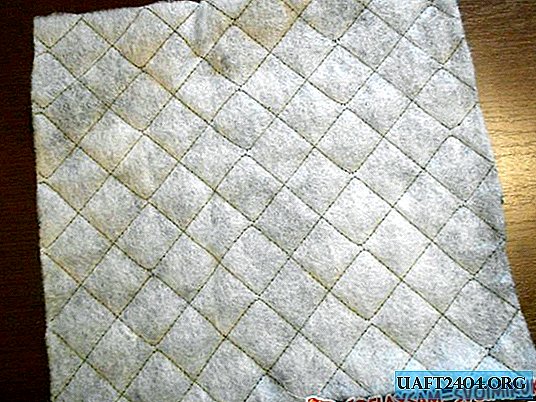Share
Pin
Tweet
Send
Share
Send

To do this, you will need:
- raincoat fabric - 0.5 m;
- padded synthetic winterizer - 0.5 m;
- zipper - here 25 cm. in the finished product.

Work order
Dimensions shown without seam allowances!
1. The bag will consist of four parts and sewing handles. First we cut out the side part. Its width and height are, respectively, the dimensions of the bag. Here: 130x160 cm. At the same time, we round off the upper edges, making a smooth transition of the side of the bag to the upper. This move makes our bag a bit like a keg.

2. The next detail is the bottom of the bag. We cut out a rectangle from raincoat fabric. Its width is equal to the width of the side part (130 cm). We choose Dina at will (here 25 cm).

3. The side part is a rectangle of raincoat fabric (2 pcs.). One side - 25 cm (equal to the length of the bottom). The second side is measured by the side part. Since it has rounded top edges, the easiest way to measure it is with a measuring tape. From the bottom corner of the part to the middle of the top side. Here it turned out 21 cm.

4. From the padding polyester on the lining we cut out similar details. We arrange them so that the pattern of fastening the lining fabric is harmonious with respect to the overall design of the bag. Squares can be randomly positioned at an angle or strictly horizontally. It is only worth remembering that the appearance of the product will depend on this.

5. We chop off details from raincoat fabric and synthetic winterizer among themselves by tailor pins.

6. Sew them on a typewriter. To do this, lay the line at the place of attachment of the synthetic winterizer to the lining fabric. It can be both lines and glued lines.

7. The main thing is to duplicate all of them without missing a centimeter.

8. Thus, on the front side of the part we get an even symmetrical pattern.

9. This is how the finished side part will look like.

10. Putting the bag together. Parts are first chopped together with tailor pins. Flashing.

11. From raincoat fabric we cut out two strips for pens (here 12x60 cm). From a synthetic winterizer on a lining - 6х60 cm (2 pieces).

12. We wrap the synthetic winterizer with a raincoat fabric, we chop off.

13. Laying a line. You can double.

14. Sew the handles with a double seam.

15. Sew in the zipper.

Using padding polyester on the lining allows not to make a lining in the bag. In this case, you only need to trim open sections of fabric with an oblique trim. But if you want, you can sew an additional lining. When sewing several pockets to it and sew it into a bag along with a zipper.

Share
Pin
Tweet
Send
Share
Send











